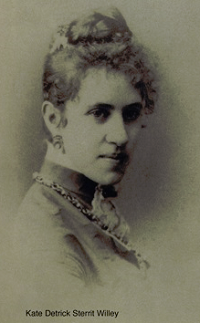Commissioner O’Connell has family link to Lusitania tragedy
Published: 2 May 2022

Lusitania Sunk
A German U-boat torpedoed the British-owned steamship Lusitania, killing 1,195 people including 128 Americans, on May 7, 1915. The disaster set off a chain of events that led to the U.S. entering World War I. Image via The History Channel.

Libby O’Connell
World War One Centennial Commissioner Dr. Libby O’Connell had always heard that an ancestor of hers died when the RMS Lusitania was sunk by a German U-boat off the coast of Ireland May 7, 1915.
Her father taught European History so she was raised on stories from the continent, including the sinking of the Lusitania. Still, she found it difficult to believe that a relative of hers had been aboard the ill-fated ship, since she could never verify the story.
 As the 100th anniversary of the historic sinking approached, O’Connell, then Chief Historian for the History Channel, was finally able to piece together the fascinating details of her great-great grandmother’s life.
As the 100th anniversary of the historic sinking approached, O’Connell, then Chief Historian for the History Channel, was finally able to piece together the fascinating details of her great-great grandmother’s life.
Catherine Sterrit was a singer and pianist in Pennsylvania when she divorced her first husband and remarried. It was this second marriage to Cameron Willey, unknown to O’Connell during her initial archives search, which finally led her to discover the truth.
When her second marriage also ended in divorce—an almost unheard of circumstance in the early part of the 20th century–Catherine Willey left the country. “Like so many other women of her time who had the means, she left America and went to Paris,” O’Connell said. At the outbreak of war in Europe, Willey returned to the United States to visit family and raise money for those in need. “She collected money and jewelry and planned to use the proceeds to set up a home for penniless war widows,” O’Connell said.
Despite German warnings that any ship flying the flag of Great Britain would be sunk upon entering the war zone, Willey was one of more than 1,900 passengers aboard the Lusitania when it sailed from New York’s Pier 54 on May 1, 1915.
The Lusitania was sunk by a single torpedo, killing more than 1,100 passengers and crew, including Catherine Willey.
The sinking of the Lusitania was “one of the pivotal moments of World War I,” O’Connell said. “The United States was neutral at the time, but the sinking brought us much closer to joining the war.” Still, it would be nearly two years before the U.S. officially entered the conflict.



